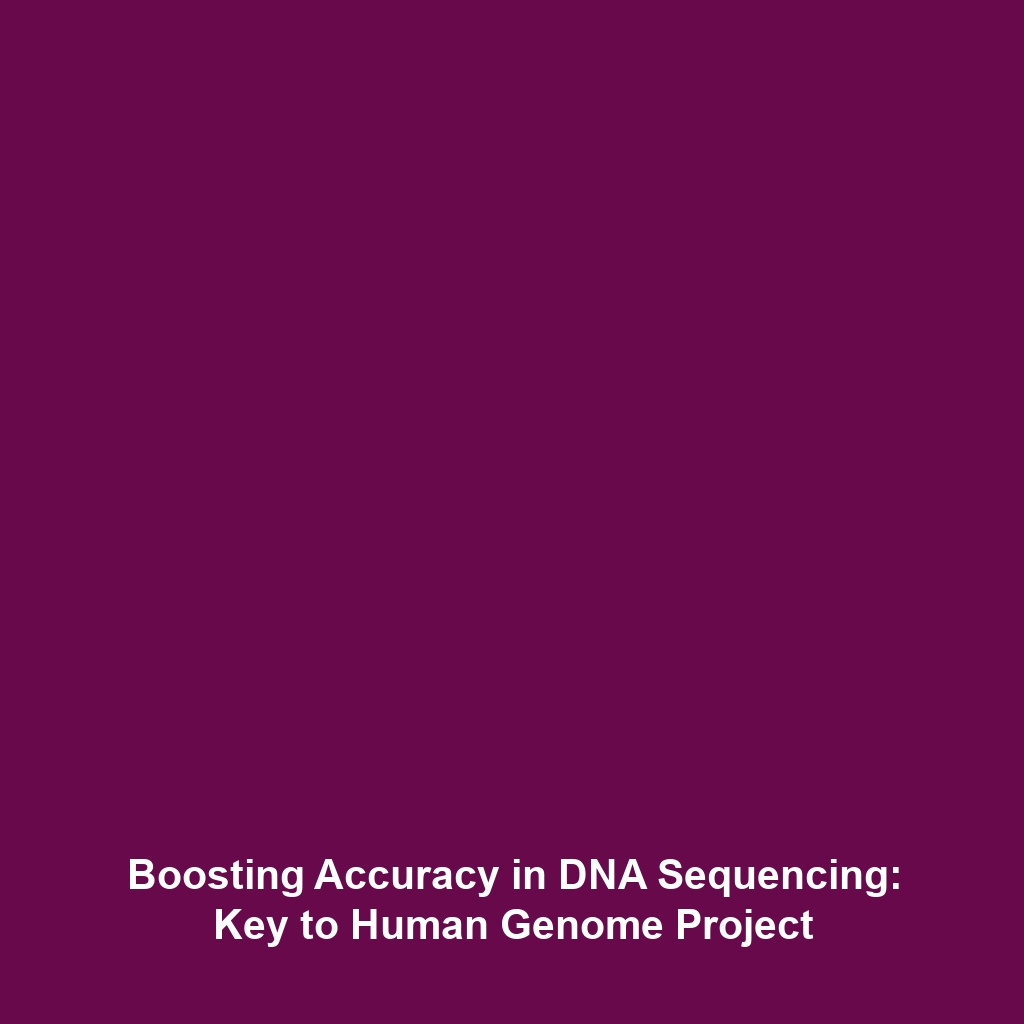Accuracy and Error Rates: Ensuring High Accuracy while Sequencing Large Amounts of DNA
Introduction
The accuracy and error rates in DNA sequencing are crucial aspects of genomic research, especially in the context of the Human Genome Project. Achieving high accuracy while analyzing vast amounts of DNA is significant, as it ensures the reliability of genetic information. With advancements in sequencing technologies, understanding and minimizing error rates become paramount in facilitating breakthroughs in genomics. This article delves into the key concepts surrounding accuracy and error rates, their applications, and the implications for future research within the scope of the Human Genome Project.
Key Concepts
Understanding accuracy and error rates involves several key principles:
- Sequencing Technologies: Various methods, such as Sanger sequencing and Next-Generation Sequencing (NGS), are employed to read DNA sequences. Each has its distinct accuracy levels and error rates.
- Error Models: Different types of errors can affect DNA sequences, including substitution, insertion, and deletion errors, which directly impact the overall accuracy.
- Quality Control: High-throughput sequencing generates large datasets, necessitating robust quality control measures to gauge sequencing accuracy effectively.
- Impact on Genomic Studies: Accurate sequencing is essential for producing reliable data for genomic studies and potential medical applications, making error rates a critical concern in the Human Genome Project.
Applications and Real-World Uses
The implications of accuracy and error rates in DNA sequencing are widespread, particularly within the realm of the Human Genome Project. Key applications include:
- Clinical Genomics: Understanding genetic predispositions to diseases is enhanced by high accuracy in DNA sequencing, allowing for better diagnosis and personalized medicine.
- Pharmacogenomics: Accurate sequencing empowers researchers to identify how genetic variations affect drug metabolism, leading to tailored therapies.
- Evolutionary Biology: Studies on genetic diversity and evolution depend on precise DNA sequencing to draw accurate conclusions about species relationships.
These applications demonstrate how ensuring high accuracy in DNA sequencing fundamentally influences the success of the Human Genome Project.
Current Challenges
Despite advances, several challenges persist in achieving optimal accuracy in DNA sequencing:
- High Error Rates: Some sequencing technologies, particularly NGS, may exhibit higher error rates, affecting interpretability.
- Data Management: The sheer volume of data produced requires sophisticated algorithms for error correction and quality assessment.
- Cost-Effectiveness: Balancing high accuracy with cost considerations remains a challenge for widespread implementation.
- Standardization: Lack of standardized protocols can lead to variability in sequencing results across different labs.
Future Research and Innovations
The future of accuracy and error rates in DNA sequencing looks promising, driven by innovative research and technologies. Key areas of focus include:
- Single-Molecule Sequencing: Techniques that read individual DNA molecules could significantly reduce error rates.
- Advanced Algorithms: Development of better algorithms for error detection and correction may improve sequencing accuracy.
- Automation and AI: Integrating artificial intelligence in sequencing processes could facilitate faster, more reliable data analysis.
These innovations promise to enhance the efficacy of the Human Genome Project and contribute to a deeper understanding of human genetics.
Conclusion
In conclusion, ensuring high accuracy while sequencing large amounts of DNA is critical for the success of the Human Genome Project. A focus on accuracy and understanding error rates will not only support current genomic research but also pave the way for future innovations in the field. To learn more about related topics, visit our resources on Clinical Genomics and Pharmacogenomics.

Leave a Reply